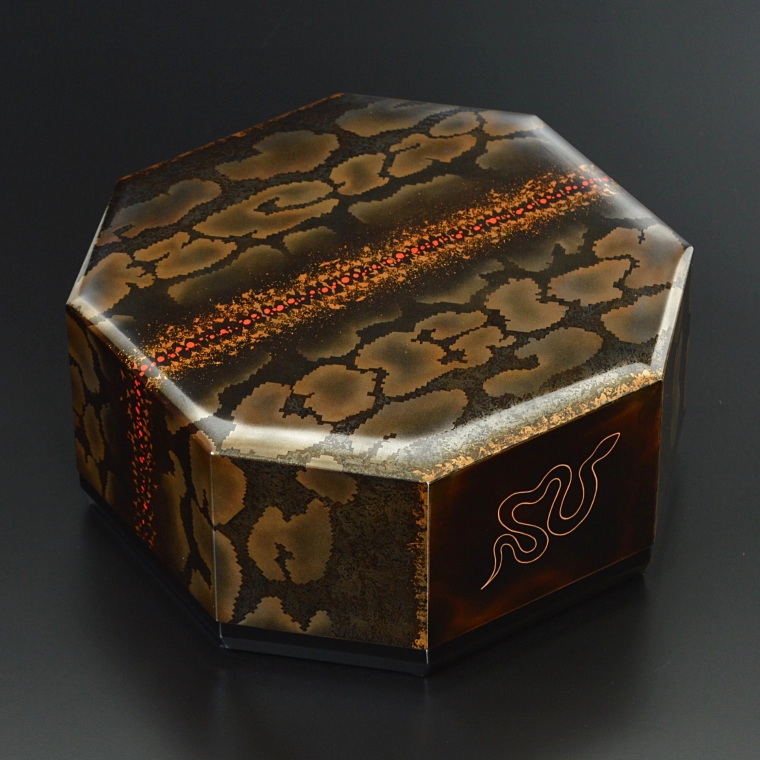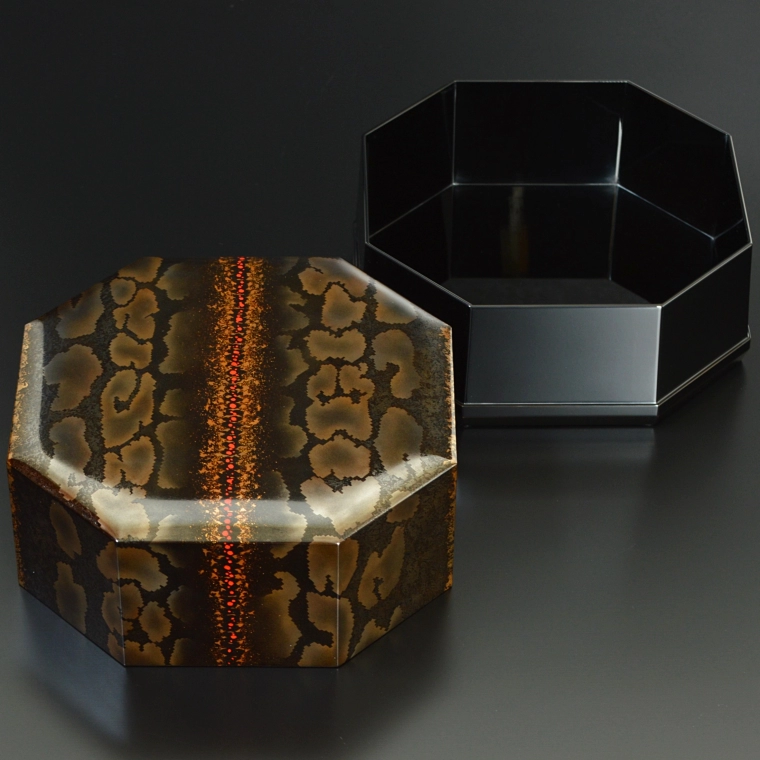Octagonal Box with Design in Jigoemon Lacquering "Light of Dawn - Python Ⅱ"
H 11.5 x W 25.1 x D 25.1 cm,Year.2014Jigoemon Ohara XVI
1979 -- Lacquerware
-
Price Range
$2,000 - 39,000
Info
The prices of the artworks on Gallery Japan are determined by the artists themselves and are published directly on the website.
close - Awards at Japan Kōgei Assoc. Exhibitions : 3
About the Artwork
Inspired by a quote from the philosopher Nietzsche, “the snake which cannot cast its skin has to die,” the moulting and evolution is illustrated here using palladium and gold maki-e. The pattern in the middle can be seen as a trail of Urushi (Japanese lacquer), painted not with white but with red, the original colour of Urushi. This was introduced as a new attempt unlike any other Jōhana Maki-e creation up until that point, and was exhibited in cities such as New York, Washington D.C., Jakarta, and Hong Kong.
Description
-
CategoryLacquerware
-
MaterialsUrushi lacquer, Cypress, Hemp cloth, Gold powder, Silver powder, Pigments
-
DimensionsH 11.5 x W 25.1 x D 25.1 cm
-
Year presented2014
-
RarityUnique
-
Paulownia BoxIncluded
-
Artist SignatureSigned (name of artwork, paulownia box)
Techniques Used
Maki-e
Maki-e (literally “sprinkled pictures”) is a representative lacquerware technique that originated in Japan around 1,200 years ago. Maki-e is done by painting lacquer motifs on the surface of a piece using a fine brush and then sprinkling gold powder onto the lacquer before it hardens, producing luxurious decorations.
Lacquering
Lacquering (kyūshitsu) is the art of applying lacquer to a substrate using spatulas or brushes. The technique includes a range of processes, from reinforcing the substrate with cloth to building up the foundation and applying the middle- and top-coats. The final coat can be left as is (nuritate), polished with charcoal to a high-gloss finish (roiro shiage), or given one of several hundred alternative (kawarinuri) finishes. Lacquer application is known for both its technical difficulty and richly expressive qualities.
Please feel free to contact us to commission work, check artworks available for purchase etc.


